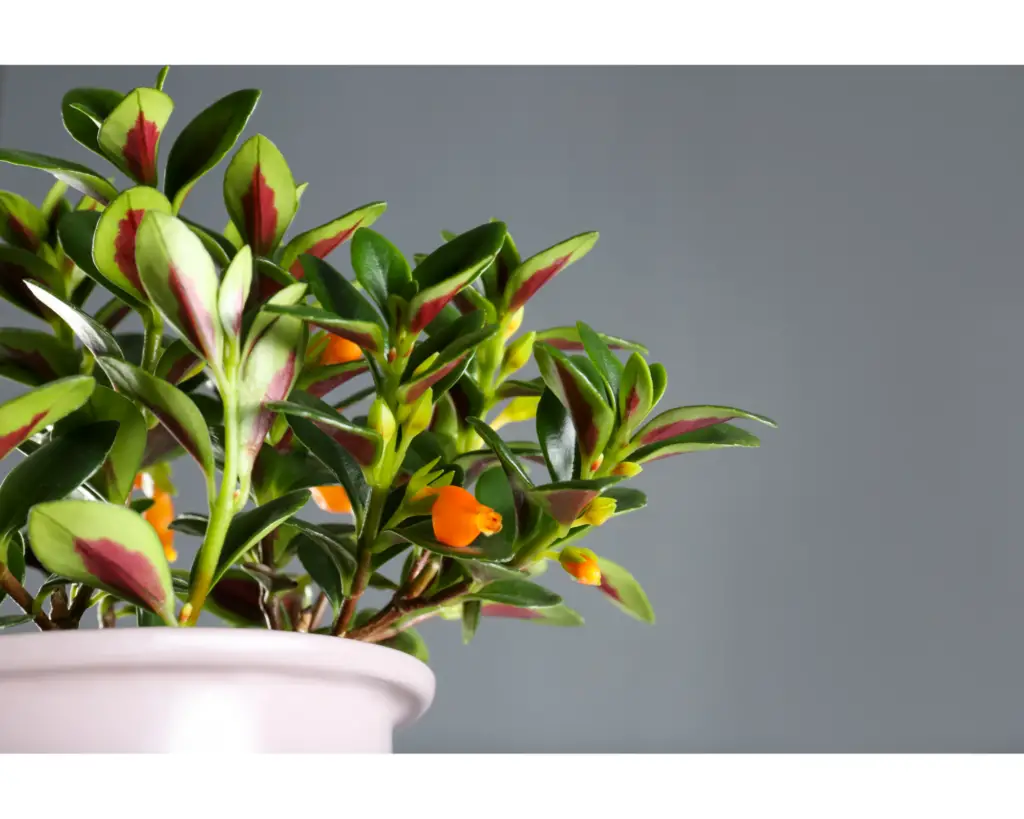Goldfish plants, also known as Columnea nematanthus, are a popular houseplant species that belong to the Gesneriaceae family. These plants are native to Central and South America, where they grow in the tropical rainforests. Their common name is derived from the small, brightly coloured flowers that resemble the shape of a goldfish. In this article, we will explore the characteristics, care, propagation, and common problems associated with Goldfish plants.

Table of Contents
Characteristics of Goldfish Plants
Goldfish plants are relatively small, bushy, and epiphytic plants that grow to a height of around 8 to 12 inches (20-30 centimetres). They have soft, green leaves that are oval or lance-shaped, with slightly serrated edges. The leaves are typically 2 to 4 inches (5-10 centimetres) long and have a glossy texture. The plant’s stems are thin, wiry, and flexible, and they tend to trail down the sides of the container, making it a great hanging plant.
One of the most striking features of Goldfish plants is their bright, showy flowers, which appear in clusters at the end of the stems. The flowers are typically orange or red, although there are other varieties that produce yellow or pink flowers. The blooms are tubular in shape and are split at the end, creating the appearance of a goldfish. The flowers can last for several weeks, making the plant an attractive addition to any room.
Care for Goldfish Plants
Goldfish plants are relatively easy to care for, and they are perfect for novice gardeners. These plants thrive in bright, indirect light, and they prefer a consistently moist but well-draining soil mix. Overwatering can be detrimental to the plant, as it can lead to root rot, so it is crucial to ensure that the soil is never soggy. A good rule of thumb is to allow the top inch of soil to dry out before watering again.
Goldfish plants are relatively sensitive to temperature changes, and they prefer a warm, humid environment. A temperature range between 60 and 75 degrees Fahrenheit (15 and 23 degrees Celsius) is ideal for these plants. Avoid placing the plant in direct sunlight, as this can scorch the leaves and flowers. Instead, place the plant in a bright, shaded area, or provide it with artificial lighting if natural light is insufficient.
Fertilising the plant is also essential for healthy growth and flowering. Use a balanced fertiliser every two weeks during the growing season (spring and summer) and once a month during the dormant season (fall/autumn and winter). It is also a good idea to prune the plant regularly to maintain its shape and encourage new growth.
Propagation of Goldfish Plants
Goldfish plants are relatively easy to propagate, and there are several methods you can use to increase your collection. One of the most common methods is by stem cuttings. To do this, take a 4 to 6 inch (1- to 15 centimeters) stem cutting from the parent plant and remove the lower leaves. Dip the cut end in rooting hormone and plant it in a well-draining soil mix. Keep the soil moist and place the cutting in a bright, shaded area. After several weeks, the cutting should root and start to produce new growth.
Another method of propagation is by division. To do this, remove the parent plant from its container and carefully separate the root ball into two or three sections. Replant each section in its container with fresh soil mix and water thoroughly. This method is best done in the spring, just before the growing season begins.

Common Problems with Goldfish Plants
Like all houseplants, Goldfish plants can be susceptible to several pests and diseases. One of the most common problems is spider mites, which can be identified by their fine webbing and small, white dots on the leaves. To control spider mites, use a gentle insecticidal soap or neem oil spray and ensure that the plant is kept in a humid environment.
Another common issue is overwatering, which can lead to root rot and yellowing of the leaves. To prevent this, ensure that the soil is well-draining and allow the top inch of soil to dry out before watering again. It is also important to ensure that the plant is not placed in a drafty area or exposed to sudden temperature changes.
Goldfish plants may also suffer from fungal diseases, such as powdery mildew or leaf spot. These diseases can be prevented by ensuring that the plant is not overcrowded and is given adequate airflow. If the plant does become infected, remove any affected leaves and treat with a fungicide.
Conclusion
Goldfish plants are a unique and attractive addition to any indoor garden. They are relatively easy to care for and propagate, making them an ideal plant for novice gardeners. With their brightly coloured, goldfish-shaped flowers and glossy green leaves, they are sure to add a pop of color to any room. As with all plants, it is important to be aware of common problems and to take preventative measures to ensure the plant remains healthy and thriving. With proper care, Goldfish plants can provide years of beauty and enjoyment.
